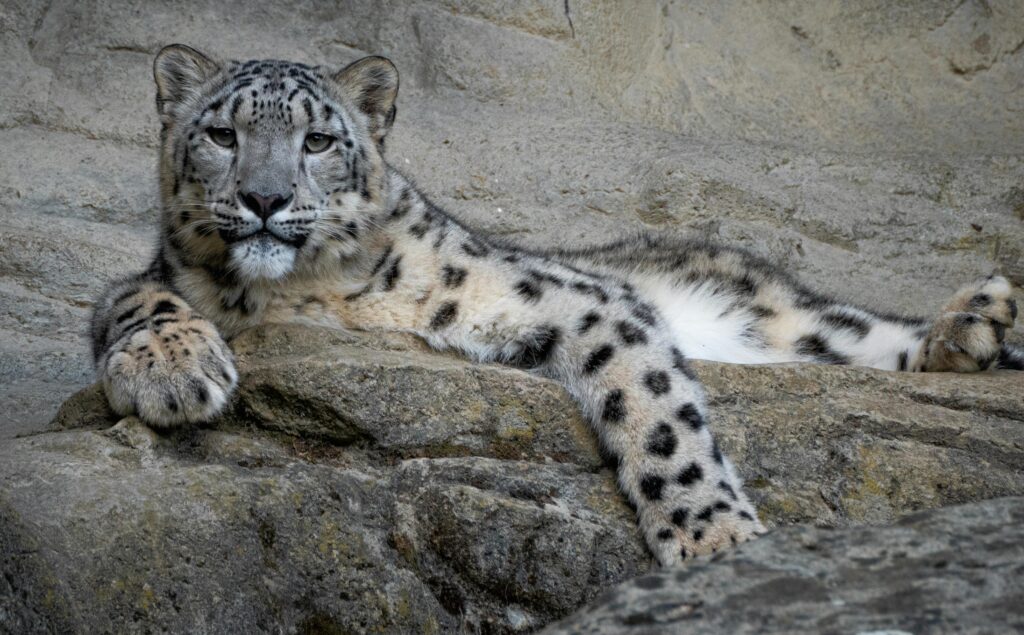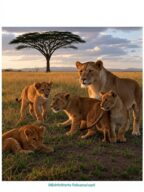
The snow leopard, known as the “Ghost of the Himalayas,” is a majestic and elusive wild cat native to the high-altitude regions of Central and South Asia. This SEO-optimized guide explores the snow leopard’s habitat, unique adaptations, diet, threats, and conservation efforts, offering a comprehensive look at this iconic big cat.
What Is a Snow Leopard?
The snow leopard is a large feline renowned for its stealth and beauty, perfectly adapted to the rugged, snowy landscapes of the Himalayas, Altai, and Tibetan Plateau. Often called the “Ghost of the Himalayas” due to its camouflaged fur and elusive nature, this wild cat thrives in extreme environments, making it a symbol of resilience and mystery.
Keywords: Snow leopard, Ghost of the Himalayas, wild cat, big cat, Himalayan wildlife
Snow Leopard Habitat
Snow leopards inhabit high-altitude regions, typically between 9,800 and 14,800 feet (3,000 to 4,500 meters). Their range spans 12 countries, including:
- Himalayas (India, Nepal, Bhutan)
- Tibetan Plateau (China)
- Altai and Sayan Mountains (Mongolia, Russia)
These areas feature rocky terrains, steep cliffs, and sparse vegetation, where snow leopards blend seamlessly with their surroundings thanks to their pale, smoky-gray fur with black rosettes.
Unique Adaptations of the Snow Leopard
Snow leopards are uniquely equipped for their harsh environment:
- Camouflaged Fur: Their thick, pale coat with black rosettes provides insulation and near-perfect camouflage in snowy, rocky terrains.
- Large Paws: Acting as natural snowshoes, their fur-covered paws distribute weight for better traction on snow.
- Powerful Leaps: With strong hind legs, snow leopards can leap up to 50 feet (15 meters), ideal for navigating cliffs and chasing prey.
- Long, Bushy Tail: Nearly as long as their body (31-39 inches or 80-100 cm), it aids balance and serves as a scarf during rest.
- Vocal Limitations: Unlike other big cats, snow leopards cannot roar but communicate through hisses, meows, and scent markings.
Snow Leopard Diet and Hunting
Snow leopards are apex predators, primarily hunting:
- Blue sheep (bharal)
- Ibex
- Marmots
- Small rodents
In lean times, they may consume vegetation, a rare trait among carnivores. Crepuscular by nature, they are most active at dawn and dusk, using stealth to stalk prey over long distances before launching a swift ambush.
Threats to Snow Leopards
Snow leopards are classified as vulnerable by the IUCN, with only 4,000–6,500 individuals remaining in the wild. Key threats include:
- Habitat Loss: Mining and climate change reduce their living space.
- Poaching: Their pelts are highly valued in illegal markets.
- Human-Wildlife Conflict: Herders may kill snow leopards to protect livestock.
Conservation efforts, such as those by the Snow Leopard Trust, focus on reducing conflict and protecting habitats through community-based initiatives.
Cultural Significance:
In Himalayan communities, snow leopards hold spiritual importance, symbolizing strength and resilience. Their elusive nature adds to their mystique, making them a revered figure in local folklore and traditions.
Keywords: Snow leopard symbolism, Himalayan culture, wildlife folklore
Snow Leopard Conservation
Protecting snow leopards requires global efforts. Organizations like the Snow Leopard Trust and local initiatives work to:
- Mitigate human-wildlife conflict
- Restore habitats
- Raise awareness about snow leopard conservation
You can support these efforts by donating to conservation groups or spreading awareness about this incredible species.
Keywords: Snow leopard conservation, wildlife protection, save snow leopards
Why Snow Leopards Matter
Snow leopards are a keystone species, maintaining the balance of their fragile high-altitude ecosystems. Their survival reflects the health of the Himalayan environment, making their conservation critical for biodiversity.
Keywords: Snow leopard importance, Himalayan ecosystem, keystone species
The snow leopard, or “Ghost of the Himalayas,” captivates with its beauty, strength, and mysterious nature. From its remarkable adaptations to its vital role in the ecosystem, this wild cat is a testament to nature’s resilience. By supporting conservation efforts, we can ensure the snow leopard continues to roam the high peaks for generations to come.
For more information on snow leopard conservation, visit Snow Leopard Trust or explore wildlife resources.

